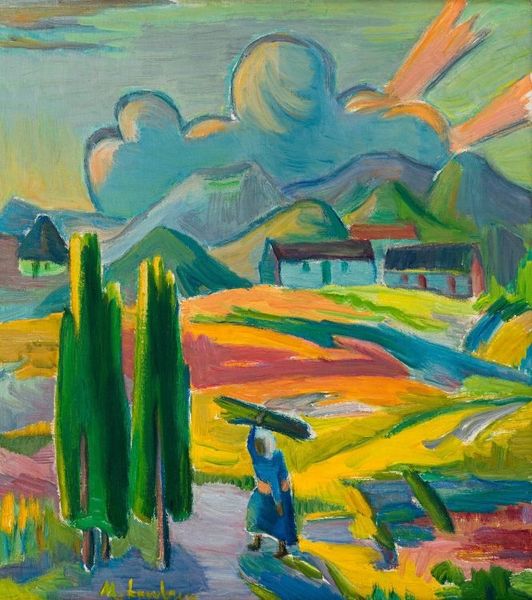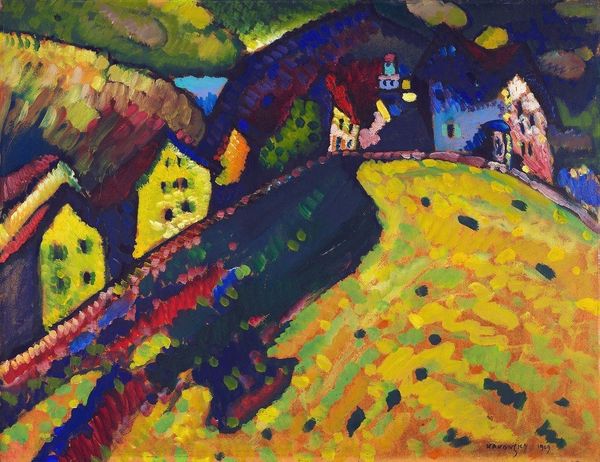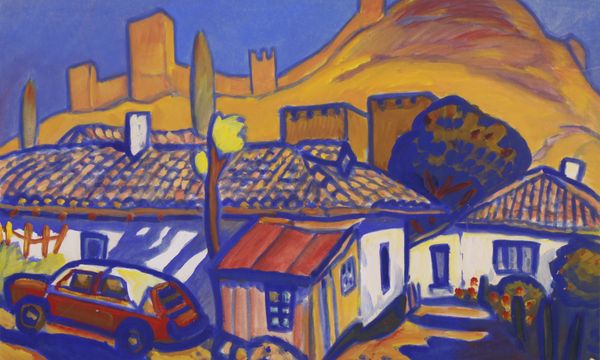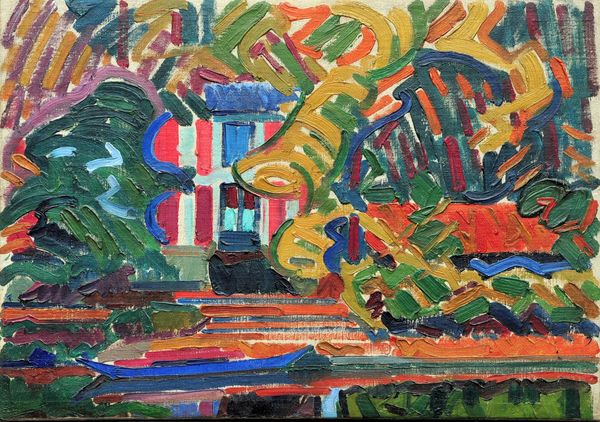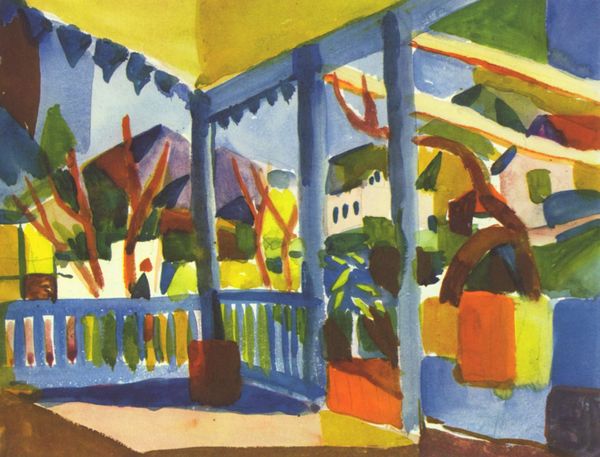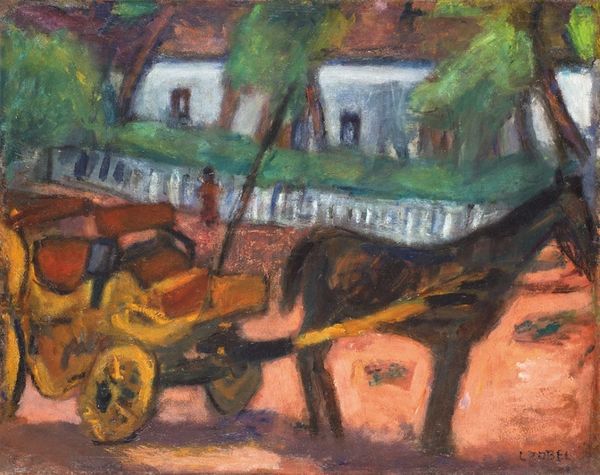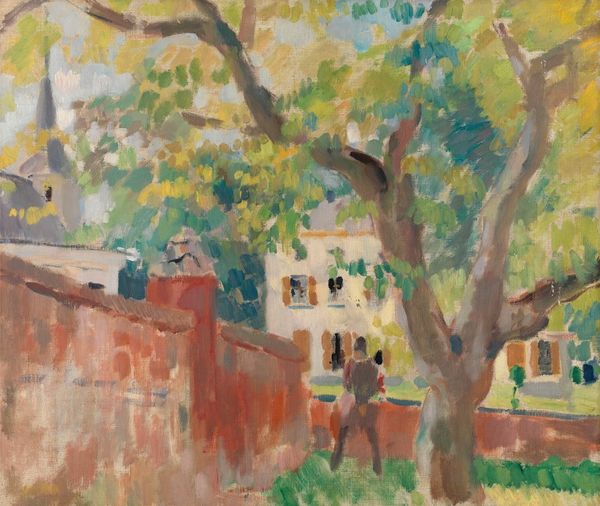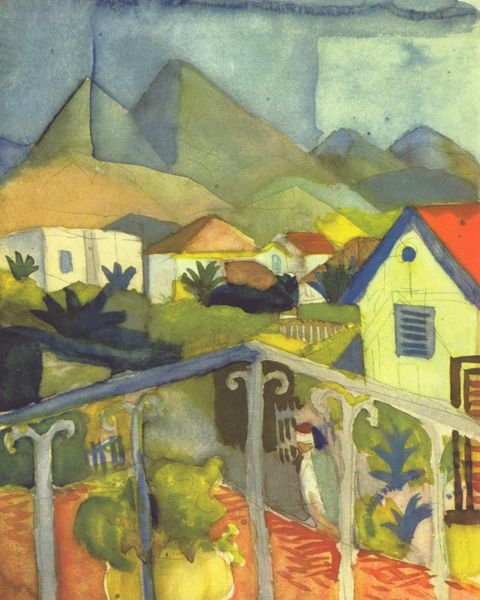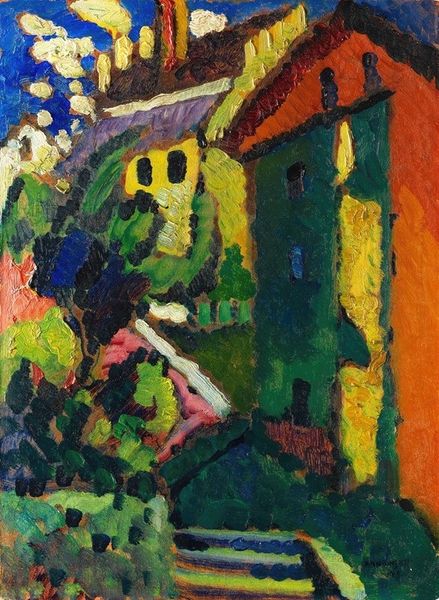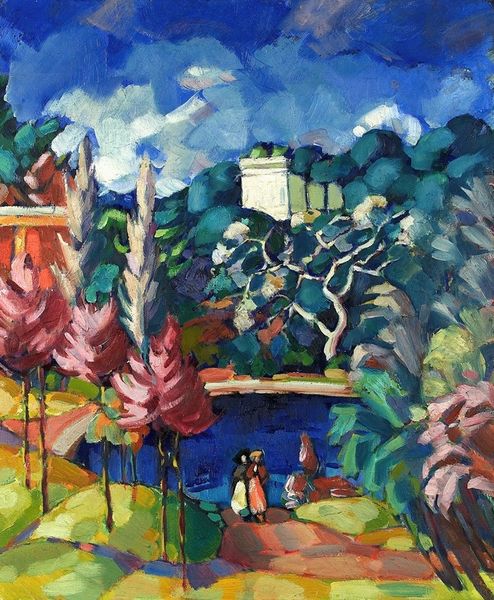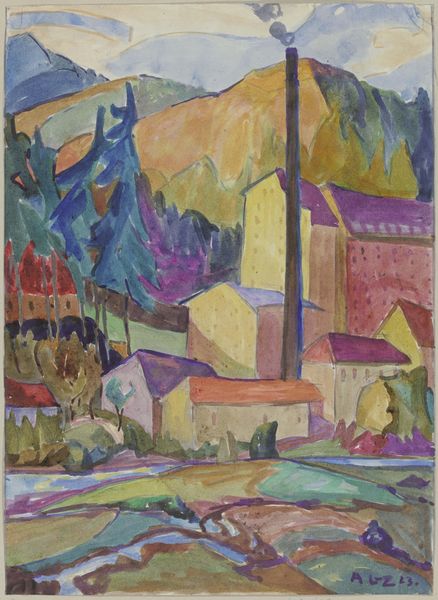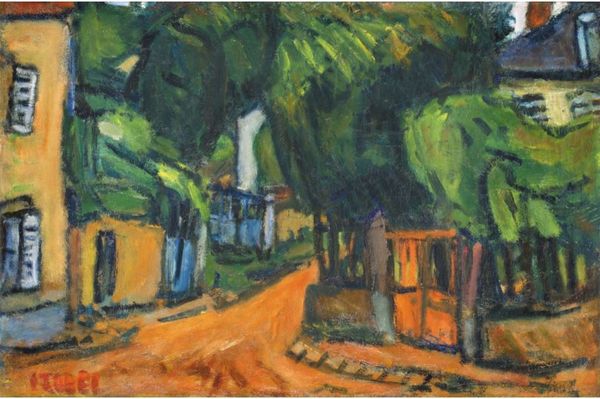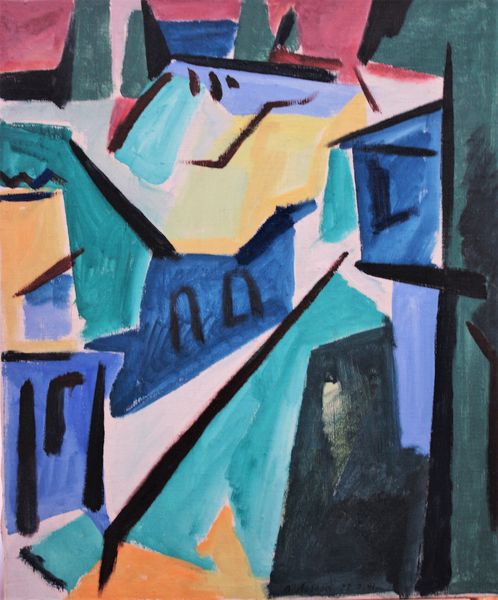
Copyright: Public domain US
Curator: This is Max Pechstein’s "Leba," painted in 1922. Pechstein, a key figure in German Expressionism, here uses oil paint to depict a landscape in a style that resonates with both Fauvist and Expressionist tendencies. Editor: My initial feeling is, it's oddly cheerful, yet also somewhat unsettling. The vibrant colors pull you in, but then you notice the angularity, almost a fractured sense of reality. It’s like a memory slightly gone awry. Curator: Exactly. "Leba" and the areas surrounding it held significant historical and artistic meaning for Pechstein. We must consider his association with the group Die Brücke, and the social and political turmoils in Weimar Germany after WWI. This painting can be viewed as reflecting the sense of fragmentation and search for harmony prevalent at that time. The idyllic facade clashes with something deeper. Editor: The blues and reds really pop, almost scream, against that creamy yellow—but I love the guy dipping what looks like a bucket, you know? It adds this everyday quality amidst the emotional chaos. Like, life just keeps going. Curator: His approach to color is intentionally jarring. Consider how the composition guides our eye – the bridge structure serves almost as a visual barrier, leading us away from the houses in the background. It encourages questioning, who does this space really belong to and on whose land was it built? It reminds us to analyze ownership, property, and individual stories. Editor: Right! The colors give me a bit of that edgy “postcard from hell” feeling. But hey, maybe that's beauty, even if it is the slightly demented kind, ha! Anyway it feels great seeing this space through Pechstein's brush and soul. Curator: Agreed, these contrasts make "Leba" particularly thought-provoking when examining the context of post-war Germany. There is both promise and disruption embedded into what first seems like just another cheerful landscape scene. Editor: This painting definitely lingers. Curator: Absolutely, there's much more beneath the surface.
Comments
No comments
Be the first to comment and join the conversation on the ultimate creative platform.
